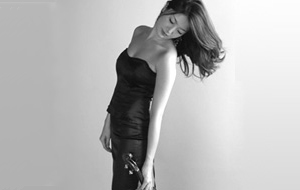April 1st was host to a Children Helping Children benefit concert held at Le Poisson Rouge, a popular music venue and bar in downtown Greenwich Village. CHC’s young, exuberant founder and director, Jourdan Urbach, delivered a vibrant, virtuosic violin performance with the help of his much-appreciated pianist Karen Beluso. (Joining the dynamic duo later in the program was mezzo-soprano Gabrielle Lowell.) The evening featured arrangements of jazz-age golden oldies, as well as a number of Urbach’s original compositions.
Urbach started out the night strong with a lighthearted rendition of George Gershwin’s “Porgy & Bess”, arranged by “3 nice, Jewish boys” (Gershwin, Heifetz, and Urbach), as comically noted in the program. Evident the moment he picked up his bow, the 19-year-old’s playing was superlative in every way. Urbach exhibited both impeccable technique and exquisite artistry in each piece that graced the room, reveling in the jazz and country undertones that flowed throughout the concert. Glimmers of a smile could be seen on the Yale student’s face whenever he executed a graceful portamento or flawless up-bow spiccato. In his difficult arrangements and compositions, Urbach is a violinist that dares to challenge himself and thrives. Beluso followed him perfectly, although the level of some of the compositions and arrangements would have been raised that extra notch had she been more featured.
The casual nature of the evening continued despite a few short interludes, concluding with the New York premiere of “Hope”, an operatic song cycle by Urbach. Gabrielle Lowell’s delivery of Emily Dickinson poems in English, Spanish, and Yiddish was appealing, but the work was not particularly memorable. Understandably, Urbach’s strength was manifested in the beginning and middle portions of the program, during which he made use of his classical education and signature blues style. The public should keep an eye on this up-and-coming philanthropist-musician. He is apt to go far on his own ambition, delighting audiences every step of the way.
–Chelsea Blakeburn for New York Concert Review; New York, NY


